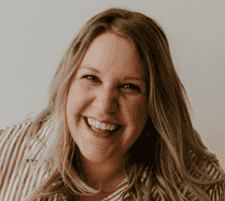Looking to invest in residential real estate without buying a rental home or investment property? Collateralized mortgage obligations can be an option. These investment vehicles, commonly known as CMOs, allow you to invest in residential mortgage loans packaged together as a single product.
Let’s take a look at what CMOs are, how they work and what risks you should be aware of before investing in this type of security.
What Is A Collateralized Mortgage Obligation (CMO) In Finance?
A collateralized mortgage obligation (CMO) is a type of mortgage-backed investment product that’s backed by a pool of home loans – sometimes thousands of mortgage loans – bundled and sold on the secondary mortgage market as a single investment. The loans in this pool of mortgages usually share a feature, such as similar loan terms and credit scores.
Who Creates CMOs?
CMOs are typically issued by large mortgage investors, including government-sponsored enterprises, such as the Government National Mortgage Association (Ginnie Mae), the Federal Home Loan Mortgage Corporation (Freddie Mac) and the Federal National Mortgage Association (Fannie Mae).
Individuals can also invest in CMOs backed by private companies such as home builders, banks and financial institutions. Independent credit agencies rank CMOs and assign credit ratings based on their level of risk.
See What You Qualify For
Buy A Home
Discover mortgage options that fit your unique financial needs.

Refinance
Refinance your mortgage to have more money for what matters.
Tap Into Equity
Use your home’s equity and unlock cash to achieve your goals.
How Do CMOs Work?
The mortgages in CMOs are organized by maturity (or due date) and risk level and sorted into different groups, also known as tranches. Each tranche carries loans with different principal balances and interest rates.
CMO bondholders (or investors) get paid from the monthly payments homeowners make on mortgages in the tranche. Investors in CMOs receive principal and interest payments according to prearranged schedules and rules.
Assessing Risk Levels
The risk levels are important for assessing a CMO’s return on investment (ROI). Loans with lower levels of risk are most likely to be repaid in full. The homeowners repaying these mortgage loans typically have stronger credit histories and credit scores and lower monthly debt.
Loans in higher-risk tranches are often mortgages taken out by borrowers with lower credit scores. These borrowers are considered more likely to miss payments or default on their loans.
Investors are more likely to get paid if they invest in a lower-risk tranche. Investors in a higher-risk tranche may lose money if too many loans default or homes foreclose.
CMOs Vs. Mortgage-Backed Securities And Collateralized Debt Obligations
Now let’s look at how collateralized mortgage obligations compare to other types of fixed-income securities.
CMO Vs. MBS
A mortgage-backed security (MBS) is any investment vehicle backed by a bundle of residential mortgage loans. MBS issuers buy loans from the banks or financial institutions that originated them. Mortgage originators sell loans to investors to free up cash so they can continue to offer loans to home buyers.
A CMO is a type of MBS, but not all mortgage-backed securities are CMOs. The difference between a CMO and a traditional MBS is that the loans in a collateralized mortgage obligation are split into tranches based on risk and maturity dates.
CMO Vs. CDO
CMOs are backed by a pool of mortgages. CDOs are backed by a pool of various debt types, including personal loans, car loans, credit cards and mortgages.
Like collateralized mortgage obligations, collateralized debt obligations (CDOs) are investment vehicles – or pass-through securities – that provide cash flow to investors.
What Are Some Common CMO Investment Risks?
As with all investments, CMOs have risks. The return you’ll receive on these investment vehicles will depend a lot on changes in interest rates and changes in the economy.
Here are some of the biggest risks when investing in CMOs:
High Prepayment Rate
Prepayment is one of the biggest risks you’ll face as a CMO investor. If the borrowers in your CMO pay off their mortgages early, you’ll lose out on the interest payments they were scheduled to make, and your return on investment will be lower.
However, to help predict the return on investment of a CMO, investors can calculate the prepayment rate, which is the speed at which borrowers pay off their mortgages ahead of schedule. The rate is based on market trends, historical data and geographic location. You may consider holding off on investing if a CMO’s prepayment rate is predicted to be high.
Repayment Default
The homeowners in your CMO must make their mortgage payments for you to earn a profit from your investment. Your profits won’t suffer significant damage if a few homeowners default on their loans, but your CMO contains thousands of mortgage loans.
If an excessive number of homeowners default and their homes go into foreclosure, your CMO will hemorrhage money. The CMO’s issuer won’t be able to pay investors – including you.
Market Changes
When you invest in a CMO, you’re also subject to market changes. For example, let’s say current mortgage rates dive after you invest in a CMO, and a large number of borrowers in your CMO refinance their loans. These events can affect your CMO’s term and yield.
Why? Lenders pay off mortgage loans when borrowers refinance them. If the loans in your CMO are paid off early, you won’t continue earning money from interest payments because borrowers are no longer paying those mortgages.
The Bottom Line: CMOs Have Risks And Rewards
If you want to invest in real estate but prefer purchasing rental property to generate income and make a profit, you can start on your initial mortgage approval today.
Take the first step toward the right mortgage.
See what you can afford.

Miranda Crace
Miranda Crace is a Staff Writer for Rocket Companies, bringing a wealth of knowledge about mortgages, personal finance, real estate and personal loans for over 10 years. Miranda is dedicated to advancing financial literacy and empowering individuals to achieve their financial and homeownership goals. She graduated from Wayne State University, where she studied PR writing, film production and film editing. In her spare time, Miranda enjoys traveling, actively engages in the entrepreneurial community, and savors a perfectly brewed cup of coffee.












